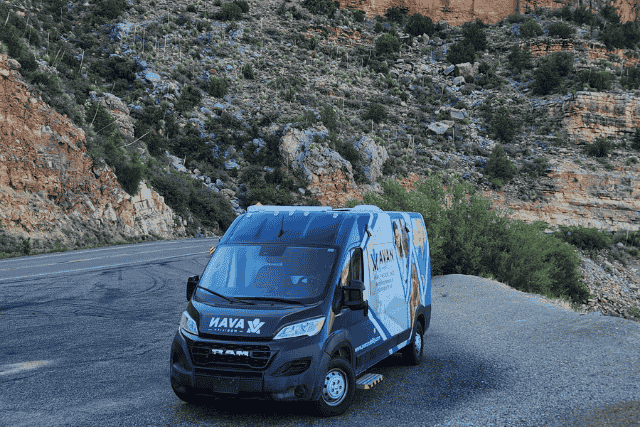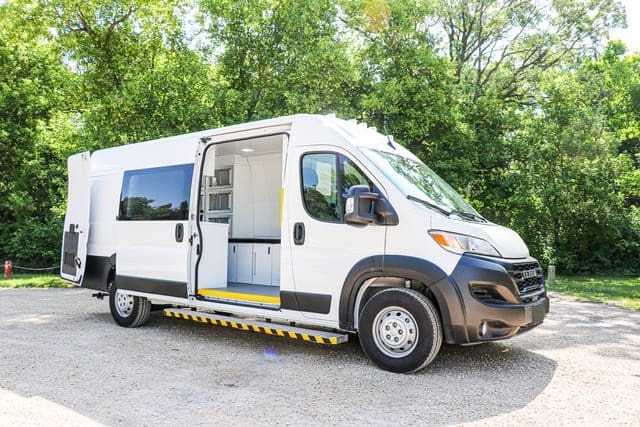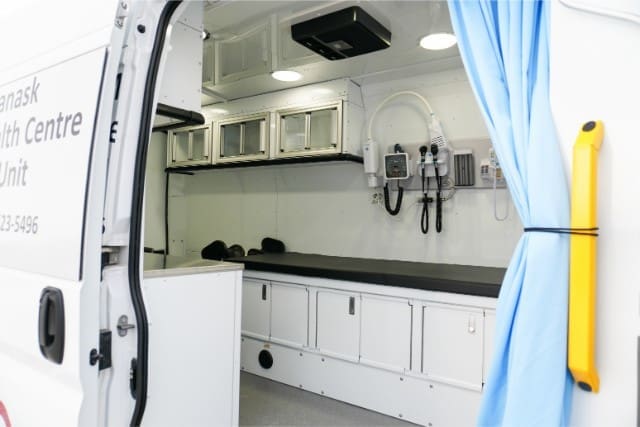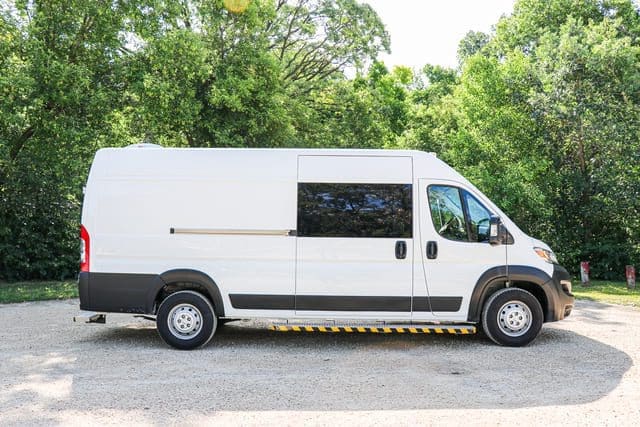Have you looked into the mobile medical bus cost lately and felt a little overwhelmed? You’re not alone. Across the U.S., community health leaders, nonprofits, and hospital networks face the same challenge: you want to expand care, but the price tag feels like a brick wall. Waiting to act can leave gaps in service; gaps where rural patients go without screenings, urban outreach falls short, and those needing care slip through.
We see the weight you carry. You’re juggling budgets, community needs, and pressure to make the right investment. You want a solution that makes care accessible without draining your resources. That’s where the right information can turn hesitation into confident action.
At AVAN Mobility, we’ve spent over 10 years building mobile medical vehicles for healthcare networks, governments, and nonprofits across the country. Our team has worked with groups like the Agency for Community Treatment Services, taking the time to understand each community’s unique needs. We know we’re not the only manufacturer, but we’ve built a track record of listening first, building second, and sticking around long after delivery.
In this article, you’ll learn:
- The cost of a mobile medical bus
- How to decide if it’s the right fit
- Alternatives to a mobile medical bus
Keep in mind that any prices outlined in this article vary and are based on publicly available information.
What’s the cost of a mobile medical bus?
A mobile medical bus cost in the U.S. usually ranges from $375,000 to well over $1 million. That’s a big range, and it can surprise people the first time they see it. But there’s a reason for that jump. These buses are built to fit very specific needs, and no two builds are exactly the same.
Some programs need a bus that’s basically a private clinic on wheels with multiple exam rooms, imaging equipment, and full HVAC. Others need a smaller setup for basic screenings and outreach. The complexity of the build, the type of equipment, and the features you choose all change the final price.
Think of it like building a house. You can keep it simple with just the basics, or you can customize it to have all the extras you want. Both will serve the purpose, but the price tags will look very different.
Why is the price range of a mobile medical bus so wide?
That wide range comes from the choices made at every step of the build. Each decision adds to or reduces the cost.
Here’s what makes the biggest difference:
- Vehicle platform: The chassis is the foundation of the bus. Larger buses with stronger frames, more space, and extra accessibility features cost more. A basic platform might cover essential needs, but heavy-duty builds support more advanced setups.
- Custom layouts: The interior is designed around your program. A simple open space for screenings will cost less than a layout with private exam rooms, a waiting area, and storage for medical supplies. More walls, furniture, and finishing work add to the price.
- Medical equipment: Installing fixed 12-lead ECGs, ultrasound units, fridge units for medicine, and lab-style cabinets goes beyond simple add-ons. These items must be securely mounted and powered correctly. That complexity raises prices fast.
- Comfort systems: Climate control, high-grade insulation, upgraded lighting, and quiet generators improve the experience for staff and patients. These systems also keep the bus running longer without constant repairs.
- Compliance and durability: Meeting healthcare regulations isn’t optional. Specialized systems like ADA-compliant ramps, secure data setups, and reinforced materials all help the bus pass inspections and hold up over years of use.
In short, the price changes depending on how much you want your bus to do. A bus built for basic care will be at the lower end of the range, while a bus acting as a complete mobile clinic will be at the top, or even beyond $1 million.
How do you decide if a mobile medical bus is the right fit?
A mobile medical bus is a big investment, and it’s not the right choice for every program. These buses are designed for large-scale outreach, which means they need the right funding, staffing, and operational support to work well.
So how do you know if a mobile medical bus for sale makes sense for your organization? Let’s look at when it’s a strong match.
1. If you’re a massive healthcare organization with the budget to back up a large program
A mobile medical bus can be a smart move if you’re part of a large hospital network, university medical center, or well-funded health department. These organizations often have the funding, staffing, and operational systems to keep a bus running at full capacity.
A bus in this setting acts like a rolling clinic that extends the walls of your facility into the community. It can deliver primary care, screenings, dental services, or even specialty care in areas far from your main location.
Here’s when a mobile medical bus for sale makes sense for a large program:
- Solid funding: You have the budget to buy and operate a bus long-term.
- Staff ready to go: You have enough doctors, nurses, and support staff to run the bus.
- High demand: Your program serves many people or multiple locations that need more access to care.
- Strong systems: You already have scheduling, maintenance, and compliance plans in place.
2. If you operate in multiple regions or serve large, spread-out communities
Covering big service areas with fixed clinics alone can leave gaps in care. A mobile medical bus can help close those gaps, but it’s not the right answer for everyone. These buses are built for larger programs that have the patient volume, budget, and operations to keep them moving.
If you serve rural counties, multiple districts, or areas where patients can’t easily get to a clinic, a bus can work well. But for smaller outreach programs, a mobile medical van can often do the job more efficiently at a lower cost.
Here’s when a mobile medical bus for sale could make sense:
- Regular schedule: You can plan and staff rotating visits to multiple communities.
- Strong partnerships: You have established relationships in the areas where the bus would operate.
- Operational readiness: You have the staffing, maintenance, and logistics to support a large vehicle.
If your program’s needs are big enough, a bus can work. But if flexibility, lower costs, or easier deployment are priorities, a van may be the better tool for the job.
3. If you’re ready for higher maintenance and fuel costs
A mobile medical bus can do a lot, but it comes with bigger operating expenses. Compared to smaller vehicles, a bus costs more to run day-to-day. This is about keeping it on the road year after year.
Maintenance on a bus is more complex and more frequent. Parts like brakes, tires, and suspension wear faster under heavy loads. Fuel is another big factor. These buses get far fewer miles per gallon than smaller vehicles, which adds up quickly if you’re traveling long distances or running multiple routes.
Here’s what to consider before committing to a mobile medical bus for sale:
- Fuel usage: Expect higher fuel bills, especially for frequent or long trips.
- Routine upkeep: Oil changes, tire rotations, brake work, and inspections all cost more for larger vehicles.
- Specialized repairs: Some repairs require specialty shops, which can mean higher labor rates and longer downtimes.
- Long-term planning: Budgeting for ongoing expenses is just as important as the upfront cost.
If your organization is prepared for the ongoing operational expenses, a bus might fit your plans. If not, a smaller mobile medical van could deliver many of the same services with lower ongoing costs.
What alternatives are there to mobile medical buses?
If you’re not ready for the big investment of a mobile medical bus, there’s good news. You still have options to bring healthcare directly to your community. For smaller programs, or for those just starting out, different types of mobile units can be a better fit, both financially and operationally.
One of the most common alternatives is a mobile medical van.
1. Mobile medical vans
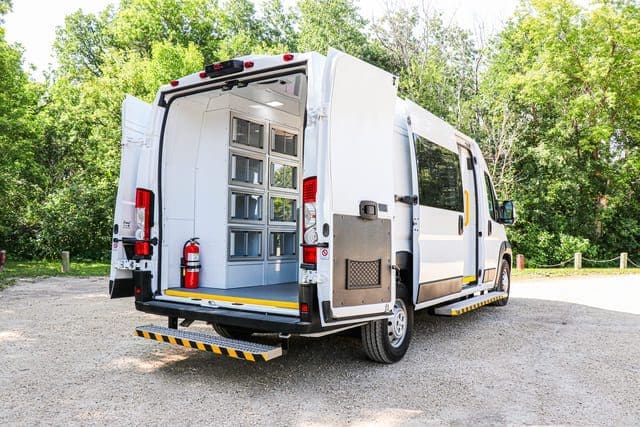
A mobile medical van offers many of the same benefits as a bus, but at a much smaller scale and price point. These vehicles are more compact, easier to drive, and far more fuel-efficient. They work well for programs focused on targeted outreach, basic primary care, or specialized services like vaccinations, screenings, and mental health support.
Here’s when a mobile medical van could make more sense than a bus:
- Lower investment: Vans cost less upfront and are cheaper to operate over time.
- Easier logistics: They can fit into tighter urban spaces or park in smaller community areas.
- Scalable growth: A van lets you start smaller and expand your fleet or services later.
- Simpler upkeep: Maintenance, repairs, and fuel expenses are all more manageable.
For many healthcare organizations, starting with a mobile medical van is a practical first step. It allows you to launch services faster without committing to the cost and operational complexity of a bus.
2. Mobile medical trailers
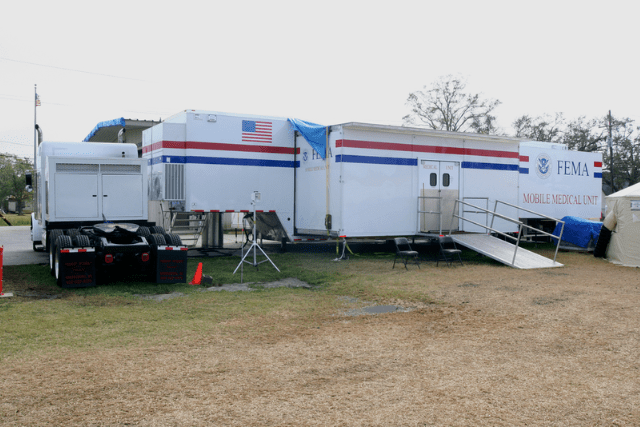
Another alternative to a mobile medical bus is a mobile medical trailer. These units can be equipped for many of the same services as a bus or van, from exams and screenings to specialty care.
Trailers can be a good option if you need more space than a van but aren’t ready for the cost of a full bus. They also give you flexibility. You can park the trailer in one spot for extended periods, then move it when needed.
That said, there are trade-offs:
- Towing requirement: You’ll need a reliable truck with enough capacity to haul the trailer safely.
- Setup and mobility: Trailers aren’t as quick to relocate as vans or buses, especially if you change locations often.
- Parking space: You need enough room to park and operate the trailer, which can be harder in urban areas.
- Maintenance split: Both the trailer and the towing vehicle require upkeep.
A mobile medical trailer can be a cost-effective alternative for programs that operate in a few steady locations or run seasonal clinics. Other vehicles might work better for programs that need fast, flexible movement.
Mobile medical bus cost: What’s next for your program?
You came here because you’re facing a gap in service, a community need that’s going unmet, unclear options, and cost concerns. You needed clarity on whether a mobile medical bus cost is worth the investment or if another solution fits better.
Here’s what you learned:
- Insight into options: You explored mobile medical buses, vans, and trailers as viable ways to reach your target community with mobile healthcare.
- Decision criteria: You discovered when a bus makes sense and when a lower-cost option may serve just as well.
- Budget clarity: You gained a clear view of what drives cost and what ongoing expenses look like.
At AVAN Mobility, our track record spans over ten years, during which time we have designed and delivered hundreds of different mobile medical vehicles, thoughtfully considering program needs, compliance, and community impact. Our focus is to match you with the tool that makes healthcare accessible for your mission.
We lead the industry by getting to know your objectives first and building around them with dignity, quality, and long-term use in mind. If you’d like to explore solutions further, click the button below to speak with a mobility expert.
If you’re not ready to talk to a mobility expert yet, we have a few helpful resources you should check out to learn more:
1. Mobile medical van vs. mobile medical bus: Reading this helps clarify how van and bus options stack up so you can compare side‑by‑side.
2. How much does a mobile medical unit cost in the U.S.? This takes a deeper look at the cost drivers of a mobile medical van.
3. Buying a mobile medical van: Your process with AVAN Mobility: Get a closer glimpse at the process of purchasing a mobile medical van through us.


